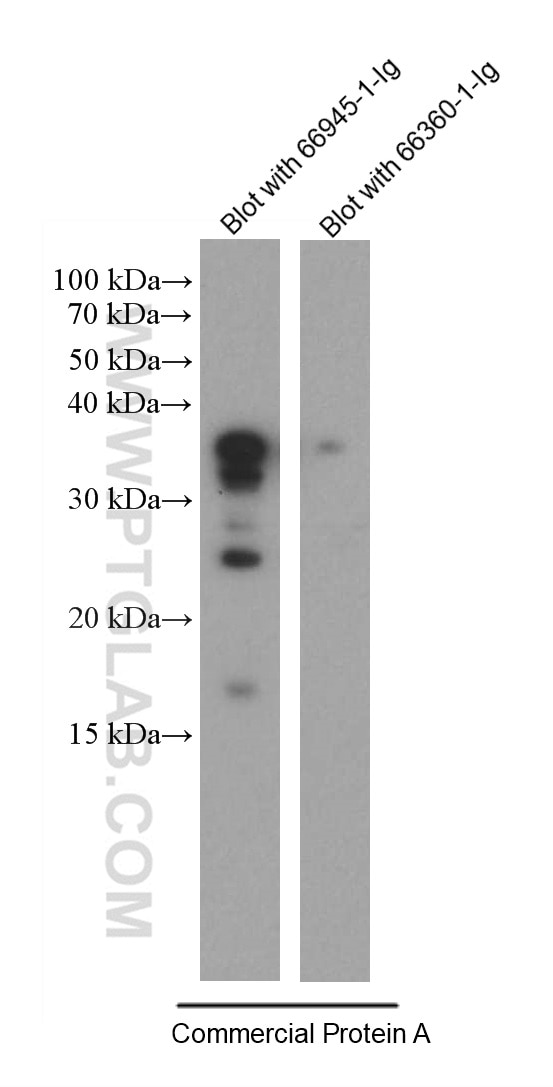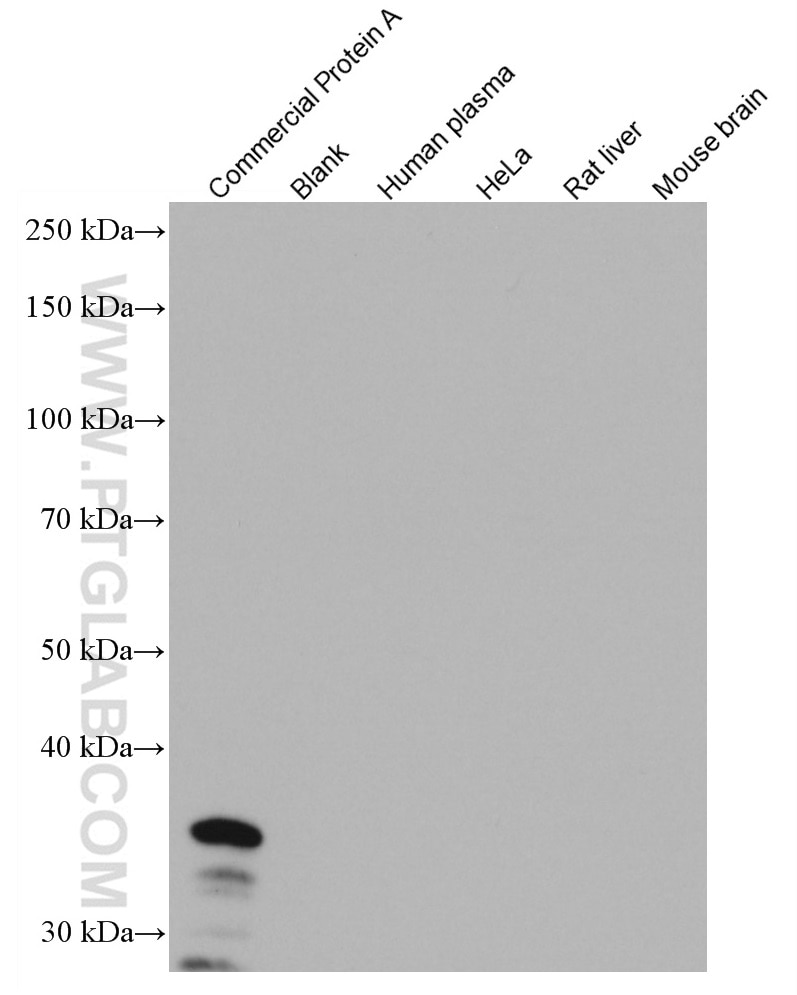Protein A Monoclonal antibody
Protein A Monoclonal Antibody for WB, ELISA
Host / Isotype
Mouse / IgG2a
Reactivity
Staphylococcus aureus and More (1)
Applications
WB, IP, ELISA
Conjugate
Unconjugated
CloneNo.
1G6A6
Cat no : 66945-1-Ig
Synonyms
Validation Data Gallery
Tested Applications
| Positive WB detected in | recombinant protein |
Recommended dilution
| Application | Dilution |
|---|---|
| Western Blot (WB) | WB : 1:2000-1:10000 |
| Sample-dependent, check data in validation data gallery | |
Published Applications
| IP | See 1 publications below |
Product Information
66945-1-Ig targets Protein A in WB, IP, ELISA applications and shows reactivity with Staphylococcus aureus samples.
| Tested Reactivity | Staphylococcus aureus |
| Cited Reactivity | human |
| Host / Isotype | Mouse / IgG2a |
| Class | Monoclonal |
| Type | Antibody |
| Immunogen | Peptide 相同性解析による交差性が予測される生物種 |
| Full Name | Protein A |
| GenBank accession number | EU695225 |
| Gene symbol | |
| Gene ID (NCBI) | |
| RRID | AB_2882269 |
| Conjugate | Unconjugated |
| Form | Liquid |
| Purification Method | Protein G purification |
| Storage Buffer | PBS with 0.02% sodium azide and 50% glycerol pH 7.3. |
| Storage Conditions | Store at -20°C. Stable for one year after shipment. Aliquoting is unnecessary for -20oC storage. |
Background Information
Protein A is a surface protein of S.aureus which binds IgG molecules by their Fc region (PMID: 4163007). Engineered Protein A has been widely used in antibody purification due to its Fc binding property. However, trace of protein A might be leaked from purification resin thus causes contamination of final products. Antibody against Protein A or ELISA kits for Protein A could be used to evaluate leaking level of Protein A from resin. Protein A should be deactivated (e.g. boiling in 5-10% tween-20) before testing.
Protocols
| Product Specific Protocols | |
|---|---|
| WB protocol for Protein A antibody 66945-1-Ig | Download protocol |
| Standard Protocols | |
|---|---|
| Click here to view our Standard Protocols |
Publications
| Species | Application | Title |
|---|---|---|
Virus Res HA2 from the Helicoverpa armigera nucleopolyhedrovirus: a WASP-related protein that activates Arp2/3-induced actin filament formation. | ||
J Biochem Title: Cloaking the ACE2 receptor with salivary cationic proteins inhibits SARS-CoV-2 entry. |



